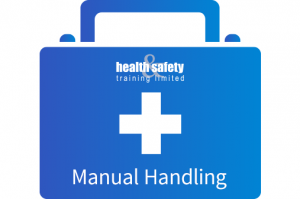The Health and Safety Kit: Manual Handling
 Incorrect manual handling is thought to be responsible for more than 1 in 5 of all work related injuries.
Incorrect manual handling is thought to be responsible for more than 1 in 5 of all work related injuries.
It is such a broad subject that it covers a whole range of ways in which an injury can be sustained, from lifting, carrying, pushing and pulling objects, to strains, sprains, trapped fingers and even cuts. As a result of the broad definition, from 2012 to 2013 7% of major injuries, including 1 fatality, and over 25% of seven-day injuries to an employee were the result of manual handling accidents, most of which could have been avoided by following proper handling procedures.
The Hazards
The main injury associated with manual handling is work-related musculoskeletal disorders (MSDs). These make up around a third of all workplace injuries and can happen in any industry, sector or environment from farms, building sites, and warehouses, to banks, offices and hospitals. The main risk factors in developing an MSD include:
- Heavy manual labour, prolonged and repetitive tasks
- Previous or existing injuries
- Poor working conditions, including a lack of mechanical aids and unsuitable loads
- Lack of training or failure to follow proper manual handling procedures
The Law
As an employer you have a responsibility to keep your staff safe from the risks associated with incorrect manual handling, and the best way to do this is to make sure you comply with the Management of Health and Safety at Work Regulations 1999 and the requirement in the Manual Handling Operations Regulations 1992 (as amended) (MHOR) to carry out a risk assessment on manual handling tasks.
According to the legislation, your main duty is to is to avoid any manual handling task, as far as reasonably practicable, if you believe there is a possibly of harm or injury. If you can’t avoid the task, you must reduce the risk as much as possible. You also have a duty to make appropriate changes to work to avoid or reduce risk if an employee complains, and you must monitor the situation to ensure they are reducing any discomfort.
Your Responsibilities
Assess
As the legally responsible person, it is your job to undertake risk assessments of each task and consider the risks from manual handling to the health and safety of your workers.
The purpose of your risk assessment is to identify all the risks so you take proportionate measures to control them.
The best way to ensure that you cover all bases is to carefully consider how an accident could occur in each situation and during each process, make sure you take into account machinery or substances that cause injury.
Include your staff by asking them their opinion of the hazards – if they’re the ones carrying out the actual work, they’ll probably have a better understanding of any risky jobs that cause them strain or concern. Be sure to include any workers who might be particularly vulnerable, such as the people with disabilities or pregnant women, as they might have concerns you wouldn’t normally consider.
Check the safety instructions on all the machinery, equipment and substances you use.
Avoid
Once you’ve identifies all the possible risks, you’ll be able to see which ones can be completely eliminated.
The first step is to check whether you need to conduct a manual handling task at all. So, for example, does that large load need to be moved, or can the task be carried out closer to the load to avoid the risks associated with moving it? Can raw materials be delivered closer to their point of use? Can you use a mechanical aid to avoid human effort and strain?
If you decide that avoiding manual handling completely is not an option, you are legally required to reduce the risk as much as possible.
Reduce
Risk is a part of everyday life, so it’s not expected that you eliminate all risks, but you must do as much as you can to make sure you are aware of them and manage them responsibly. Legally speaking you must do everything reasonably practicable to protect your employees from harm. So, for example, if you must move a load consider ways you can reduce risk, such as:
- Could a mechanical lifting aid be used to reduce manual strain?
- Could you change the workplace layout to ensure a more direct journey?
- Could the load be stored higher to reduce bending and lifting?
Available Training
Here at Health and Safety Training Ltd, we offer a range of general safety courses to keep you, your staff and your business working safely and efficiently, and this includes our NPORS Manual Handling Training Course.
The course can be applied to almost every industry, and is recommended for every member of your staff who may be at risk of receiving an injury whilst carrying out all manner of manual handling tasks during their daily working duties.
The Health and Safety Kit: Fire Safety HST team up with AquAid to provide clean water to African village





